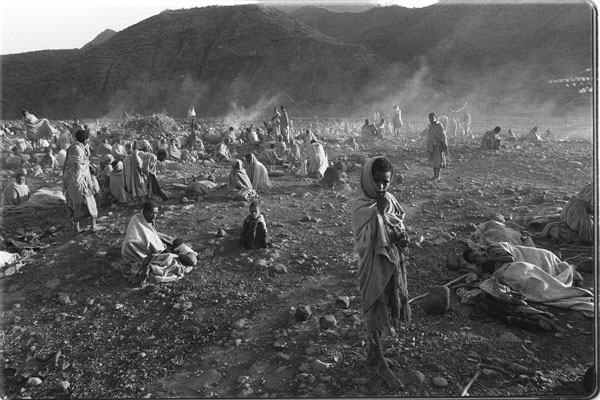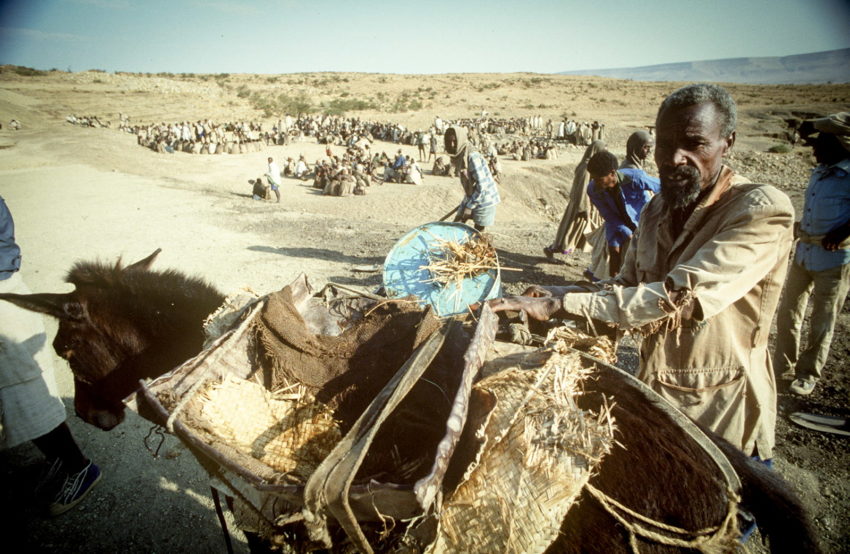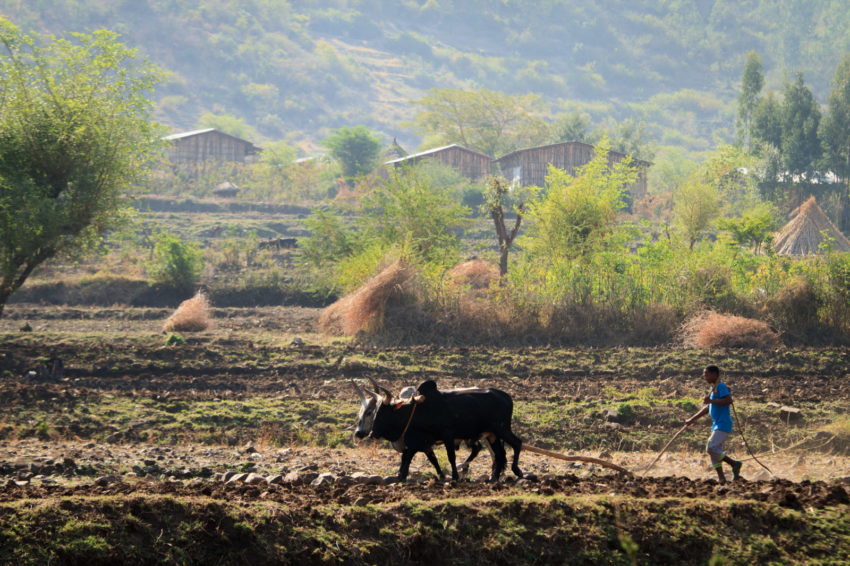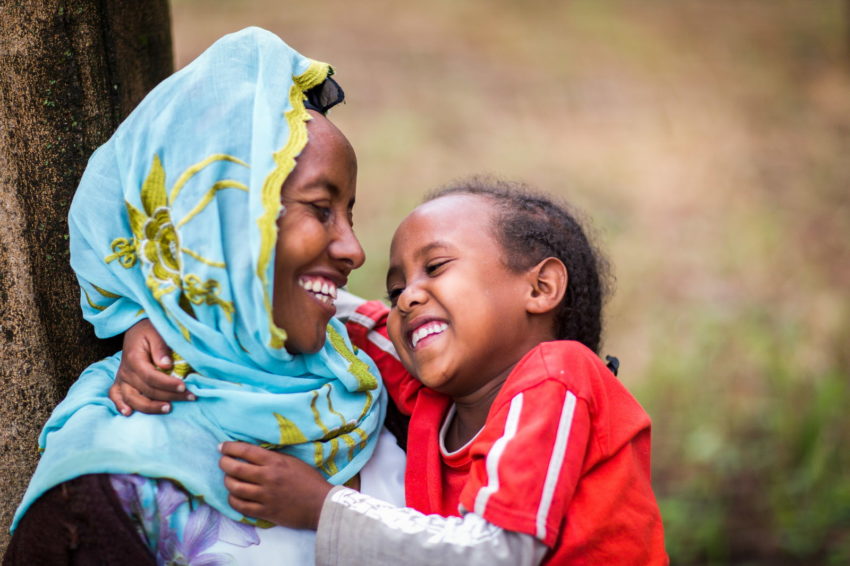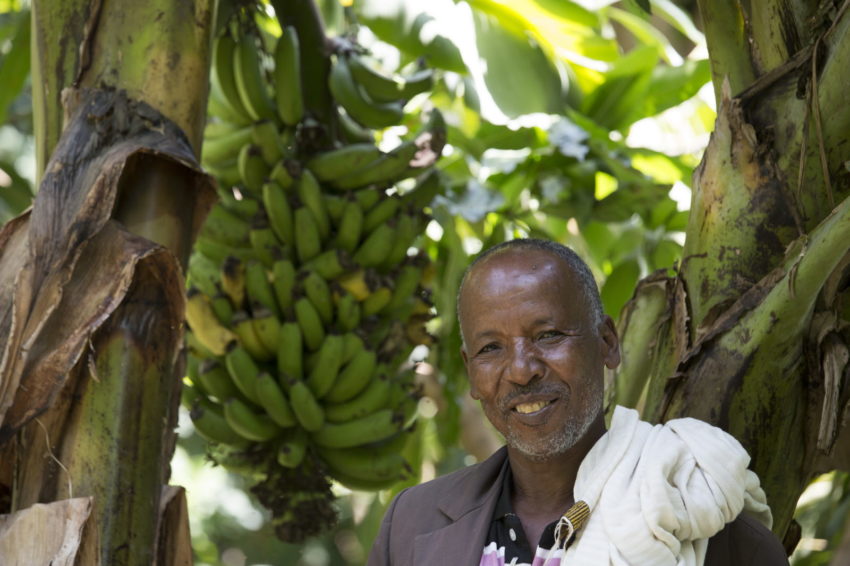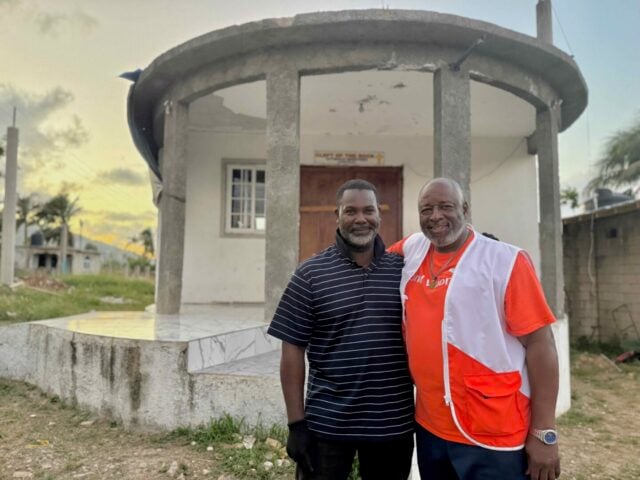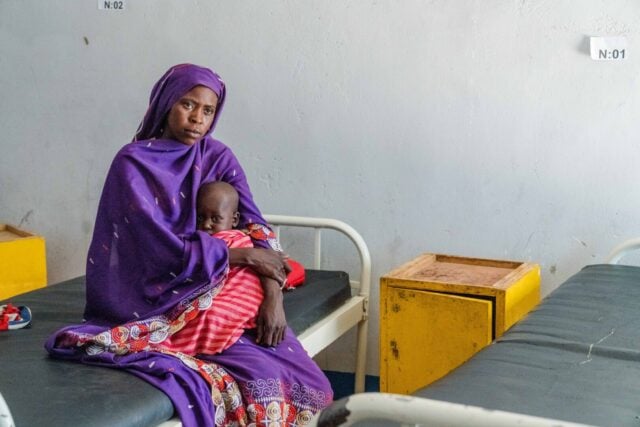The 1980s Ethiopia famine was one of the worst humanitarian events of the 20th century, galvanizing the world’s attention to end widespread starvation and save lives. Ethiopia’s food shortages and hunger crisis from 1983 to 1985 led to an estimated 1 million famine deaths, according to the United Nations. Millions more people were displaced and left destitute, without resources to rebuild their lives. The famine was also an important landmark in the history of global humanitarianism.
Facts: What you need to know about the 1980s Ethiopia famine
Explore facts and frequently asked questions about the famine in Ethiopia in the 1980s, and learn how you can help people who are hungry today.
- What is a famine?
- What caused the 1980s Ethiopia famine?
- Where in Ethiopia was the famine located?
- How did the Ethiopia famine change humanitarian aid?
- How did World Vision respond during the 1980s Ethiopia famine?
- Are there still famines today?
- In what parts of the world are people most likely to be hungry today?
- How can I help people who are hungry today?
- Is World Vision tackling global hunger today?
- Timeline of the 1980s Ethiopia famine
What is a famine?
A food crisis becomes a famine when there’s so little food in the region that it causes large-scale malnutrition, starvation, and death. Not all food crises become famines. A famine is declared when the following criteria are met:
- At least 20% of households in a given area face extreme food shortages with limited ability to cope.
- More than 30% of children suffer from acute malnutrition.
- At least two deaths per 10,000 people occur each day as a result of hunger or a combination of hunger and illness.
What caused the 1980s Ethiopia famine?
A perfect storm of adverse events led to the Ethiopia famine: recurring drought, failed harvests, food scarcity, conflict that kept aid from reaching people in occupied territory, and government policies that relocated families and routed relief to certain areas.
Where in Ethiopia was the famine located?
The worst effects of drought and deprivation were in northern Ethiopia, where there were also border conflicts.
How did the Ethiopia famine change humanitarian aid?
Aid organizations, including World Vision, rallied to bring relief to starving children and families during the famine, but much more help was needed. When BBC reporter Michael Buerk, traveling with World Vision, brought stories and images from a feeding site to home television sets in October 1984, masses were moved to donate to the relief efforts.
The Ethiopia famine marked a change not only in disaster response fundraising — out of it also came new collaborations and methods for detecting the environmental and societal factors that lead to food insecurity so future famines can be avoided. The Famine Early Warning Systems Network (FEWS NET), the leading agency of early warning and analysis on global acute food insecurity, was created in 1985 by the United States Agency for International Development (USAID).
Relief and development organizations like World Vision helped families and communities rebuild their livelihoods so they could better withstand future environmental shocks.
How did World Vision respond to the 1980s Ethiopia famine?
World Vision began working in Ethiopia in 1971. Responding to the historic famine, World Vision airdropped food into drought-plagued communities three years before the famine hit television screens. In fact, the BBC journalists traveled in a World Vision Twin Otter plane to witness the scenes of famine they filmed for the news report in October 1984 that launched international support.
In the decades since, Ethiopia has required periodic international food aid due to erratic rainfall, high population growth, deforestation, and a host of other factors. Periods of recurring drought and hunger have continued into the 21st century, but the Ethiopian government, developed nations’ governments, and international humanitarian organizations are working together to provide a safety net for families and communities.
One of the hardest-hit areas during the famine, Ethiopia’s Antsokia Valley, was transformed from a drought-stricken landscape into a lush, productive farming area, thanks to key investments made to build resilience in communities.
World Vision’s work to end hunger in Ethiopia:
- 2011 to 2012: A Horn of Africa hunger crisis followed three years of drought. World Vision aid to impacted communities included food and nutrition, water and sanitation, health, economic empowerment, and education.
- 2015 to 2016: An El Niño drought, exacerbated by extensive flooding and disease outbreaks, had a devastating impact on the lives and livelihoods of 9.7 million Ethiopians. World Vision responded with immediate aid and long-term assistance for food security and agricultural production, nutrition, health, water and sanitation, and education.
- 2017: The East Africa hunger crisis affected more than 8 million people in Ethiopia, as well as others in Kenya, South Sudan, and Somalia. Consecutive droughts deepened levels of the stressed food and nutrition situation. World Vision assisted approximately 1 million people in East Africa each month with food, water, livelihoods, health, and child protection.
- 2020 to 2022: Chronic drought and violence have deepened a humanitarian crisis in northern Ethiopia’s Afar, Amhara, and Tigray regions, where millions of people are displaced and need life-saving aid. Before the escalation of conflict in November 2020, Ethiopian families had faced decimated crops, food shortages, inflated food and fuel prices, and an overburdened healthcare system due to recurrent drought, desert locusts, and the spread of COVID-19. In collaboration with our partners, World Vision is supporting displaced families with food, emergency shelter, non-food items, access to clean water, and sanitation and hygiene facilities. We’re partnering with healthcare facilities to ensure families have the necessary supplies and nutritional care while providing support to rehabilitate damaged schools so children can learn in safe environments.
Are there still famines today?
Famines can still be declared; however, they’ve happened less often because warning systems have been better at giving governments and relief agencies time to respond and prevent hunger and malnutrition from reaching famine levels.
Unfortunately, extreme hunger is still prevalent today, as a global hunger crisis — brought on by extreme weather conditions, conflict, rising costs, and the ongoing effects of the pandemic — is reversing decades of progress. A staggering 50 million people in 45 countries are in imminent danger of having so little to eat they will become — or they already are — severely malnourished.
In what parts of the world are people most likely to be hungry today?
Globally, acute food insecurity continues to rise. Ethiopia joins Afghanistan, Somalia, South Sudan, and Yemen as countries with populations that are facing or are at risk of starvation or catastrophic conditions.
How can I help people who are hungry today?
- Pray for children and families affected by hunger today, the long-term effects of which are devastating to their future. Pray that nutritious food will be readily available in hungry communities — food that they can afford to buy or raise on their own.
- Help provide life-saving food and care. Your gift will help provide interventions like emergency food aid, agricultural support, clean water, medicine, and other essential care to hungry children and families around the world.
- Sponsor a child today. Sponsorship is the most powerful way you can empower families to rise out of poverty. When you sponsor a child, you equip them with life-saving basics like nutritious food, healthcare, access to clean water, education, and more.
Is World Vision tackling global hunger today?
World Vision is responding with the largest humanitarian undertaking in our 72-year history, aiming to reach 22 million people in 26 of the hardest-hit countries with food assistance and other life-saving support. Driven by our Christian faith, we’re responding to save the lives of children around the world. World Vision’s initial focus is on these five urgent objectives:
- Provide and improve access to food
- Ensure access to clean water and promote sanitation and hygiene to prevent disease
- Protect children, women, and vulnerable groups
- Increase access to emergency health and nutrition services
- Improve household resilience by supporting livelihoods
Timeline of the 1980s Ethiopia famine
The 1980s famine in Ethiopia caught the world’s attention, prompting generous aid and decades of long-term recovery support.
1981 to 1984: Drought and conflict
- Civil war and periodic shortfalls of rain lead to poor harvests, especially in drought-prone northern Ethiopia.
- Some contested areas are inaccessible to aid organizations. The conflict also damages the economy.
1984: Hunger crisis
- March: The Ethiopian government appeals for international food aid.
- Summer: Aid agencies struggle to meet the needs of people who are hungry. Thousands are dying, and 6 million people are at risk of starvation.
- October: Now, 8 million Ethiopians risk starvation. Michael Buerk’s BBC news footage shocks the world with images of “a biblical famine in the 20th century.”
- November: Aid support to Ethiopia increases because of public donations and interest.
- December: Band Aid, a charity supergroup featuring mainly British and Irish musicians and recording artists, forms to raise money for relief efforts.
1985 to 1987: Relief and aftermath
- March 1985: “We are the World,” USA for Africa’s single is released, followed by a Live Aid fundraising concert in July.
- In the wake of the Live Aid concert, U2 lead singer, Bono, and his wife, Ali, volunteer at a World Vision feeding center, helping to develop music and drama programs for children.
- In 1985 and 1986, hundreds of thousands of people are displaced — about 600,000 people are moved in an effort designed to cluster the population where services are provided.
- Over the course of its relief program (1984–1987), World Vision operates 13 nutrition and health centers, distributes 100,000 metric tons of food and 18,000 tons of relief supplies and medicine, and establishes medical and sanitation services to support children and families — serving up to 300,000 people each month at the height of the crisis.
1987 to 1990: Rehabilitation
- World Vision supports displaced survivors in restoring their livelihoods as they return to their communities through agricultural programs, seed and tool distribution, an agroforestry program, and training in new farming techniques.
- As famine response winds down, World Vision begins to explore a new, sustainable community development model with child sponsorship at its core. Through sponsorship programs in Ethiopia, nutrition centers are converted to community health centers, children in schools are supported with healthcare and clothing, and sponsorship-funded projects support the entire community in generating sustainable income for the future.
2000 to today: Crises
- 2016: World Vision prioritizes its operational areas where development and emergency programs are implemented, emphasizing livelihood, health and nutrition, and water, sanitation, and hygiene support. Educational programs and life skills training are expanded for children and youth ages 3 to 18. Child protection programs are enhanced to include people with disabilities.
- August 2020: A major election is delayed due to the coronavirus pandemic, which creates instability and uncertainty. Desert locust infestations threaten livelihoods and food security in northeastern Ethiopia.
- November 4, 2020: Conflict in northern Ethiopia forces thousands of people from their communities during the harvest season. Acute food insecurity rises across the region.
- August 2022: Drought expands in parts of Ethiopia following four consecutive failed rainy seasons. Large-scale livestock deaths are reported. Conflict deepens the crisis. More than 16 million people need emergency food assistance in drought-stricken areas.
- April to August 2022: World Vision reaches more than 1.25 million people in Ethiopia with life-saving aid, hygiene support, and capacity building for health centers and community health workers.
